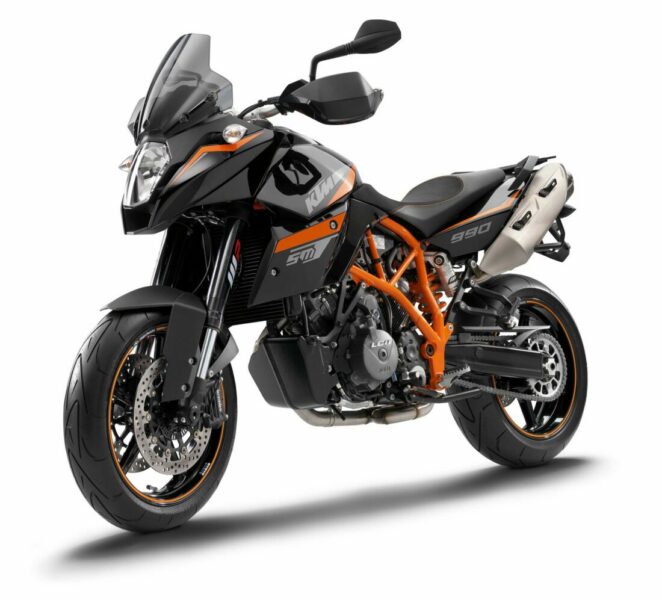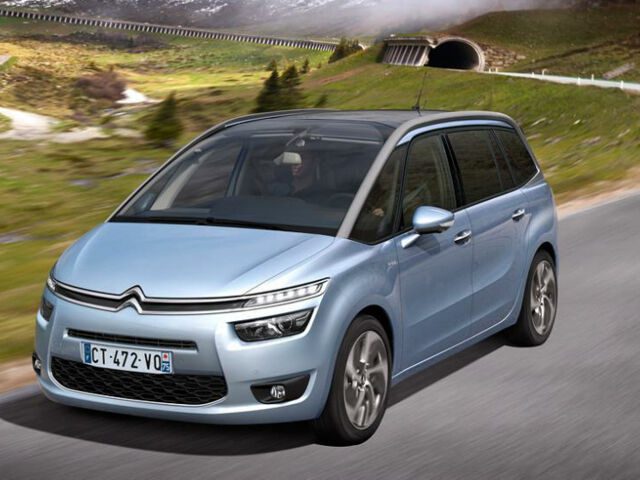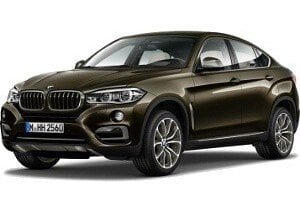
Test: KTM 990 Supermoto T
I know several motorcyclists, slow and fast, who have already tested a 990cc supermoto. See (i.e. the SM model, not the SMT model, whose good and bad salaries we'll discuss in these four pages), and if I'm not mistaken (I really think not), everyone only referred to this with superlatives, such as bomber, rocket, car and firecracker. Something in terms of explosive, powerful, athletic.
But what if not all motorcyclists are racers and extreme lightness means nothing if it is necessary to stop at least twice at a gas station to the coast and back. What will happen to a motorcycle that pulls over 200 when the breeze around life is already unbearable for many people at the maximum legal speed on the highway? And where should I go with my luggage? "Thongs" outgrew in adolescence. .
Thus, SMT was born in Matighofn. With this model, KTM wants to satisfy everyone who appreciates the temperament of a race-ready motorcycle (the slogan “ready to race” is probably not foreign to you), while at the same time they do not want to give up minimal comfort.
Regarding the minimum comfort, of course, we have different standards, but let's say that there is enough gas tank for 19 liters, a two-level saddle, suitcase holders (hard or soft) and a mask with a small windshield by some unwritten standards. so that the letters S and M are connected by another T as Touring.
The base remains the same as on the SM: a strong and lightweight (9kg) frame welded from CrMo rods for incredible stability at high speeds and confidence in quick changes of direction, as well as a liquid-coated, electronically driven body. The LC8 two-cylinder engine, one that was tested on a rally car in Dakar and later banned because it is too fast and too dangerous for the sand.
They love to brag that at 58kg, it's the lightest and most compact twin-cylinder in its class. The wheelbase is half a centimeter shorter than the SM and only a third of an inch longer than the SMC 690's single-cylinder super sports motor. The Yamaha Ténéré 1.505, for example, has the same 660 millimeters, which says a lot about the compactness of the engine. SMT.
Other components, from radially mounted caliper brakes and a radial brake pump to adjustable suspension to the dashboard, are also known from the base supermoto model. It would be appropriate if the valve was larger and showed the amount of fuel - if it is low, it only indicates this with a light, and also shows the external temperature, time, coolant temperature level and, of course, speed (in digital format) and engine speed . (analogue).
Personally, its small size did not bother me much, but the gentleman who goes with him to the Dolomites is a must. The rugged switches, with no switch that turn on all four direction indicators, are familiar, well-positioned rearview mirrors. The seat is unlocked with a lock in the back, and don't look for a first aid kit or raincoat because they're not there.
The ergonomics behind the wide handlebars are very good, even great. The seat has become a saddle to better hug the buttocks and not tire on long trips, while being two centimeters closer to the ground. The wide-toothed pedals are covered with rubber, which you can remove for a better griffin if you don't care about the outsole.
After turning the ignition key, wait about two seconds until the tachometer needle changes to the red field and comes back, indicating that the electronics are ready to start the engine. It ignites well when hot or cold, and at idle it doesn't emit any weird mechanical rumble, just a pleasantly muffled drum through two exhausts, just like the SM.
Sometimes, when the first gear is turned on, there is a sound disturbance and a feeling of ill health on the left leg. Since until recently we only had a good experience with the gearbox in the LC8 engine, we were unpleasantly surprised by the slightly worse shifting feel.
Don't misunderstand - the gearbox is not bad, only in this (price) class we expect only the best from equipment. At the same time, of course, it should be borne in mind that many riders who receive a motorcycle for a short test treat it like a sow with fur, which can have consequences for even the highest quality equipment.
Only good things can be said about the engine. Thanks to electronic fuel injection, the "car" is better controlled and more useful. The engine can be easily cranked at just three thousand rpm, but it won't start restlessly.
Adding throttle into short corners shows its effervescent character, which may not appeal to leisurely riders, but nonetheless - responsiveness is much more consistent than the previous 950cc carbureted engine, not to mention compared to single-cylinder supermotors.
The power is more than enough. The two-cylinder is ready to meet the driver's requirements for overtaking cars at any time, but if you accidentally paint a TDI with a driver who would like to prove to the rider that his Passat flies too, just let the engine turn six or seven thousand. Cruel!
In first gear, the SMT throws you easily onto your back, and also in second when the fuel tank is not full and the body is not tilted far enough forward. On cold autumn days, continental European women had to work hard to maintain their desired direction, and the electronic SMT devices that prevented slipping when accelerating or braking did not have a test SMT and could not be bought in stores. moment.
ABS wouldn't be superfluous, and given that the off-road sibling of the LC8 Adventure has it as standard, it could also be available to Touring customers. Because the brakes are heavy, and if an ignorant hand squeezes too hard in an emergency, the maneuver can end in disaster.
However, the hot-tempered man in the car that you overtook a little earlier will smile viciously at you when he sees you at the gas station. The SMT has a fairly large fuel tank, but horses quickly absorb its contents. Average fuel consumption stopped at 8 liters per hundred kilometers, which is a lot.
We believe that it could be put under a seven, but what if, when driving in such a car, every roundabout turns into a chicane, and every plane after a deep turn into the finish plane. ...
At SMT, we see everyone who has outgrown single-cylinder superbikes and those who are tired of the crooked spikes on supercars.
Unlike sport-touring bikes, which, like the SMT, combine sportiness with touring comfort, the KTM offers more entertainment options. Hey, there is no wide offer in this class, so you have to eat a high price.
Technical information
Test car price: 12.250 EUR
engine: two-cylinder V 75 °, four-stroke, liquid-cooled, 999 cc? , Keihin EFI Electronic Fuel Injection? 48 mm.
Maximum power: 85 kW (115 km) at 6 rpm
Maximum torque: 97 Nm @ 7.000 rpm
Energy transfer: Transmission 6-speed, chain.
Frame: chrome-molybdenum tubular, aluminum subframe.
brakes: front coil? 305mm, radially mounted Brembo four-tooth jaws, rear disc? 240 mm, twin-piston Brembo cam.
Suspension: front adjustable inverted telescopic fork White Power? 48mm, 160mm travel, 180mm White Power adjustable single shock.
Tires: 120/70-17, 180/55-17.
Seat height from ground: 855 mm.
Fuel tank: 19 l.
Wheelbase: 1.505 mm.
Weight: 196 kg (without fuel).
Representative: Axle, Koper – 05/663 23 66, www.axle.si, Moto Center Laba, Litija – 01/899 52 02, Maribor – 05/995 45 45, www.motocenterlaba.si.
We praise and reproach
+ driving performance
+ powerful engine
+ brakes
+ suspension
+ quality equipment
+ usability
+ wind protection
– No fuel gauge
- fuel consumption
– less precise gearbox
- no ABS options
Matevž Gribar, photo: Aleš Pavletič
Basic data
Test model cost: € 12.250 XNUMX €
Technical information
engine: two-cylinder, V 75 °, four-stroke, liquid-cooled, 999 cm³, electronic fuel injection Keihin EFI Ø 48 mm.
Torque: 97 Nm @ 7.000 rpm
Energy transfer: Transmission 6-speed, chain.
Frame: chrome-molybdenum tubular, aluminum subframe.
brakes: front disc Ø 305 mm, radially mounted Brembo jaws with four rods, rear disc Ø 240 mm, Brembo twin-piston jaws.
Suspension: front adjustable inverted telescopic fork White Power Ø 48 mm, travel 160 mm, rear adjustable single shock absorber White Power 180 mm travel.
Fuel tank: 19 l.
Wheelbase: 1.505 mm.
Weight: 196 kg (without fuel).

